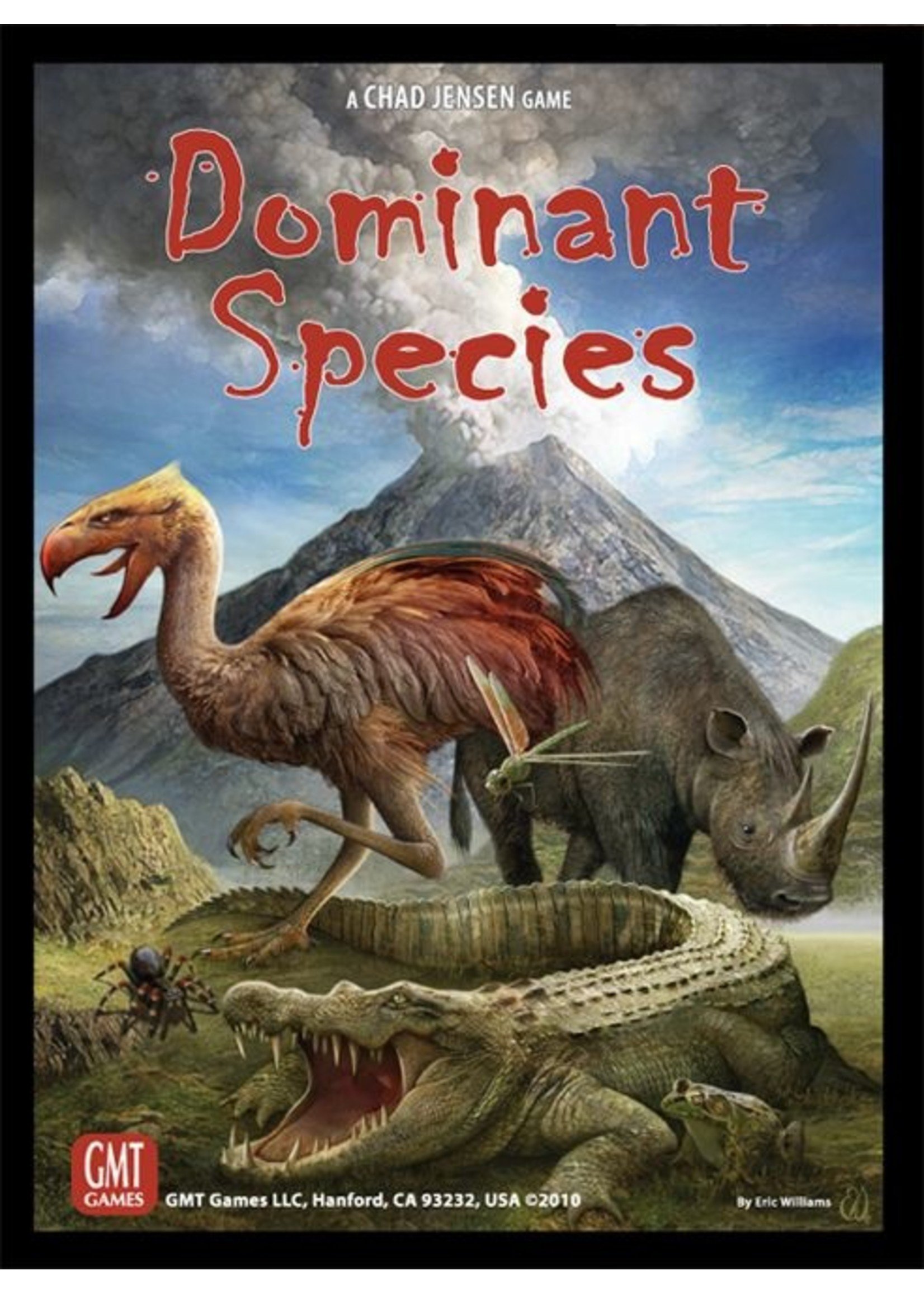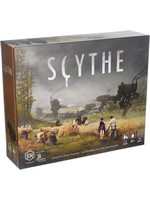90,000 B.C. — A great Ice Age is fast approaching. Another titanic struggle for global supremacy has unwittingly commenced between the varying animal species.
Dominant Species is a game for 2 to 6 players that abstractly recreates a tiny portion of ancient history: the ponderous encroachment of an Ice Age and what that entails for the living creatures trying to adapt to the slowly-changing Earth.
Each player will assume the role of one of six major Animal groups—Mammal, Reptile, Bird, Amphibian, Arachnid or Insect. Each begins the game in a state of natural balance with regards to one another. But that won’t last: It is indeed “survival of the fittest.”
Through wily Action Pawn placement, players will strive to become Dominant on as many different Terrain tiles as possible in order to draw beneficial Dominance Cards. Players will also want to propagate their individual Species in order to earn Victory Points for his particular Animal. Players will be aided in these endeavors via Growth, Migration and Domination actions, among others.
All of this eventually leads to the end game – the final ascent of the Ice Age – where the player with the most Victory Points will have his Animal crowned the Dominant Species.
But somebody better become dominant quickly, because it’s getting mighty cold….
Game Play:
Throughout a game of Dominant Species large hexagonal tiles are placed on the board to create an ever-expanding interpretation of Earth as it might have appeared a thousand centuries ago. These tiles represent the various terrain such as desert, mountain, forest and sea. The smaller Tundra tiles will be placed atop these larger tiles – converting them into Tundra in the process – as the Ice Age encroaches.
The cylindrical Action Pawns (or “AP”s) drive the game. Each AP will allow a player to perform the various actions that can be taken—actions such as growth, environmental change, migration, competition or glaciation. During each turn’s opening Planning Phase players will take turns placing their Available APs onto the Action Display, indicating a specific action that player wishes to perform that turn. During the following Execution Phase these APs will be removed in a prescribed order and their indicated action executed.
Generally, players will be trying to enhance their own Animals’ survivability while simultaneously trying to hinder that of their opponents’—hopefully collecting valuable victory points along the way. The various cards will aid in these efforts, giving players useful one-time abilities or an opportunity for recurring victory point gains.
Throughout the game Species – represented by colored wooden cubes – will be added to, moved about in, and removed from the terrain tiles in play (the “Earth”). Element markers will be added to and removed from both Animals (“need”) and Earth (“supply”).
When the “Ice Age” card triggers the end of the game, players will conduct a final scoring of each tile—after which the player controlling the Animal with the highest VP total wins the game.
Components:
- a 20-page full-color rulebook
- one 22” x 34” mounted game board
- six Animal Displays
- 27 cards
- 31 large and 12 small hexagonal tiles used to create “Earth”
- 330 wooden cubes in six colors representing the Species belonging to the six Animal groups
- 60 wooden cylinders used for the Animals’ Action Pawns
- 60 wooden cones used as the Animals’ Domination markers
- 120 round markers representing the Earth’s resources, called “Elements”
- 6 square markers used to show each Animal’s “Initiative” (turn order)
- one cloth bag







